Looking out to Lake Ontario in late March, when the ground is still thawing from winter, a daring aerialist deftly skims the water’s surface, its deep-blue iridescent feathers gleaming in the cold light. Harbingers of spring, the Tree Swallows have returned to the city. These signs of seasonal change are one of the joys of observing birdlife.
Shortly following them north will be the five other species of swallow found in Toronto, many returning to their previous nesting spots. They will be gathering mud for nest construction, investigating tree cavities, and scoping out nest boxes.
If you’ve ventured down to Ontario Place during the summer and stood around the marina or West Island, the stage has been set for an avian spectacle of hundreds of swallows zooming and diving in intricate patterns and performing some ecosystem duties: a single Barn Swallow might consume about 850 insects per day.
From the trees behind to the Budweiser Stage to the bridges that criss-cross the channels around the cluster of islands, Ontario Place is full with nesting birds. The pods are teeming with Cliff Swallows — one of the largest colonies in the city.
On a hot midsummer morning, a seat on the bank of the pond by the Temple Bell is an excellent spot to observe both Cliff and Barn Swallows as they collect mud in their beaks, forming pellets to build up their nests. The birds rarely touch the ground as they frantically flutter their wings while scooping up material.
This summer, it’s been pleasing to note Bank Swallows joining mixed swarms around the shore. A comparatively smaller species, they are distinguishable from the similar brown-coloured Northern Rough-winged Swallow (which are also present) by a distinct neck band.
These birds are all part of a group known as aerial insectivores — species that feed almost exclusively on insects while on the wing, and which also includes swifts, flycatchers and nightjars. Worryingly, an estimated 59% of this group has declined in Canada since the 1970s, the highest rate of any group of birds. Now, several in this group have landed on the Species at Risk list. At Ontario Place, the nesting Barn Swallows are designated as “threatened” at a provincial level.
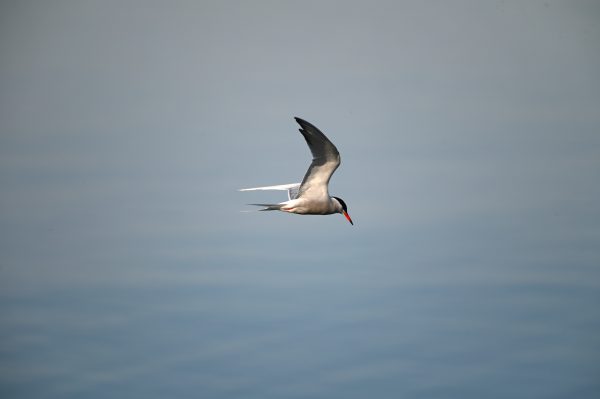
While the full impact of the proposed redevelopment hasn’t been realized yet – as the agency says on its website, “the details of potential impacts to species at risk and related habitat, and NHS will not be confirmed until the scope of work is finalized… the Project may result in impacts to some protected species, or the loss of their habitat” – there is anticipation of disruption to nests as Ontario Place undergoes initial site servicing. Over at Trillium Park, for example, three wooden structures (with hopefully more to be added?) have been erected this year to compensate for Barn Swallow nests impacted by the Pod and Cinesphere repair work. Bird exclusion netting was also recently installed around the marina to prevent birds from nesting in areas which will be affected by construction.
Having observed wildlife in this park for the past several years, I have been trying to anticipate what the potential redevelopment will mean. It is certainly a cause for concern. There are over 1,200 lists of public bird sightings, with 185 different species reported so far. Other sightings on the Species at Risk list in the past year include Grasshopper Sparrows, Horned Grebes, Wood Thrushes and Eastern Meadowlarks.
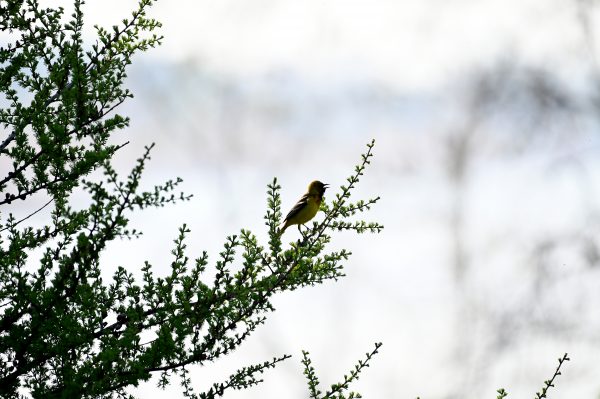
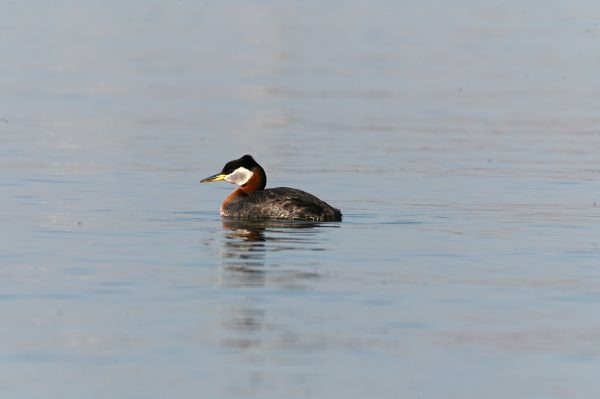
The current process of preparing the site for the future private leases includes grounds maintenance, removing infrastructure with no present purpose, and construction of site servicing. While it’s fascinating to wander around the abandoned theme park rides and overgrown pathways, it is clear there is structural work that certainly needs to take place. An accessibility overhaul should be high on a list of requirements and infrastructure does need repair.
But even with this early recognition of animal life in initial reports and actions, it’s very difficult to feel in any way positive about the future redevelopment, which involves the construction of a large glass building complex, removal of existing trees, and destruction of migratory habitat.
Collisions with building windows for example are fatal for millions of birds in Ontario each year. As Toronto is located at the intersection of two major North American migratory “flyways,” the need to take action has never been greater. Unfortunately, there presently exists no provision in the Ontario Building Code requiring new building construction to use materials that are proven bird-safe.
“Every aspect of Therme Canada Ontario Place is designed with nature, sustainability and environmental efficiency in mind,” according to the project website. Yet what is happening is the clearing of park land and adding an enormous amount of glass on the lakeshore.
All this is set against the backdrop of a scathing report on the state of Species at Risk in Ontario from the Office of the Auditor General last year, which revealed a devastating situation for vulnerable wildlife, especially in regard to new construction.
As long as the future of Ontario Place is seen through a commercial lens, the immeasurable value of habitat commitment, public land, and nature-led thinking is lost. We currently enjoy the acrobatic displays of our local swallows, not to mention the variety of hawks, woodpeckers, flycatchers, waterfowl, sparrows, and over 20 species of warblers that can all be seen at the site. Nature has taken a hold here; how can we help nurture and guarantee the survival of green spaces and public land.
As you enter the adjacent Trillium Park, a space dedicated to native flora and developed with Mississaugas of the Credit First Nation, with botany identified in Ojibway, a boulder is carved with the words, “Walk Gently On The Land.” How will this aspiration be reflected in the future connected waterfront path, and how many swallows will be swooping overhead?
Francesca Bouaoun works in the City of Toronto museums. She is interested in urban parks and is normally out on a lake shore trail with binoculars. Follow her on Twitter at @frantasticx


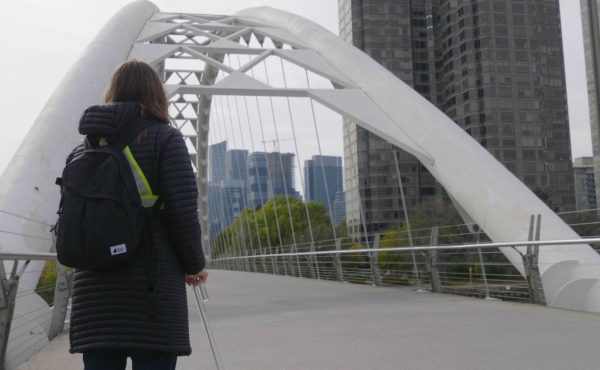
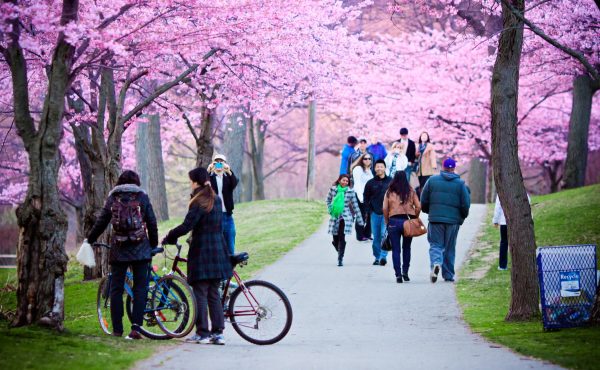

2 comments
Doug Ford will find every outlet he can to benefit his developer/paving buddies.
He wants to pave over a precious wetland for a highway we don’t want, nor need, remember?
The 100s of species affected by his greed for kickbacks from his developers is overwhelming.
He wants to turn it into a high end spa for the anti-democratic, useless women to get their nails done
Apathetic Ontario was too lazy to get out and vote & now, those of us who voted, are fucked
It is interesting at just how many bird species are making a habitat on the waterfront areas of Toronto. The endangered Piping Plovers were a recent success story thanks to efforts of volunteer conservationists. I have also recently started to see more fish in the water too.
The environmental track record and plans for the future of this site are a disaster. It’s like there is no imagination on the part of the local governments. They have failed and the only option is to sell out this public land to private development. Such a shame.
Also the artist renderings of Therme complex will not have all the glass, it will likely be mostly brick walls or cladding, like the other complexes they have built around the world. I heard the UK plans to have 90% of it’s population close to a Therme complex over the next few years.